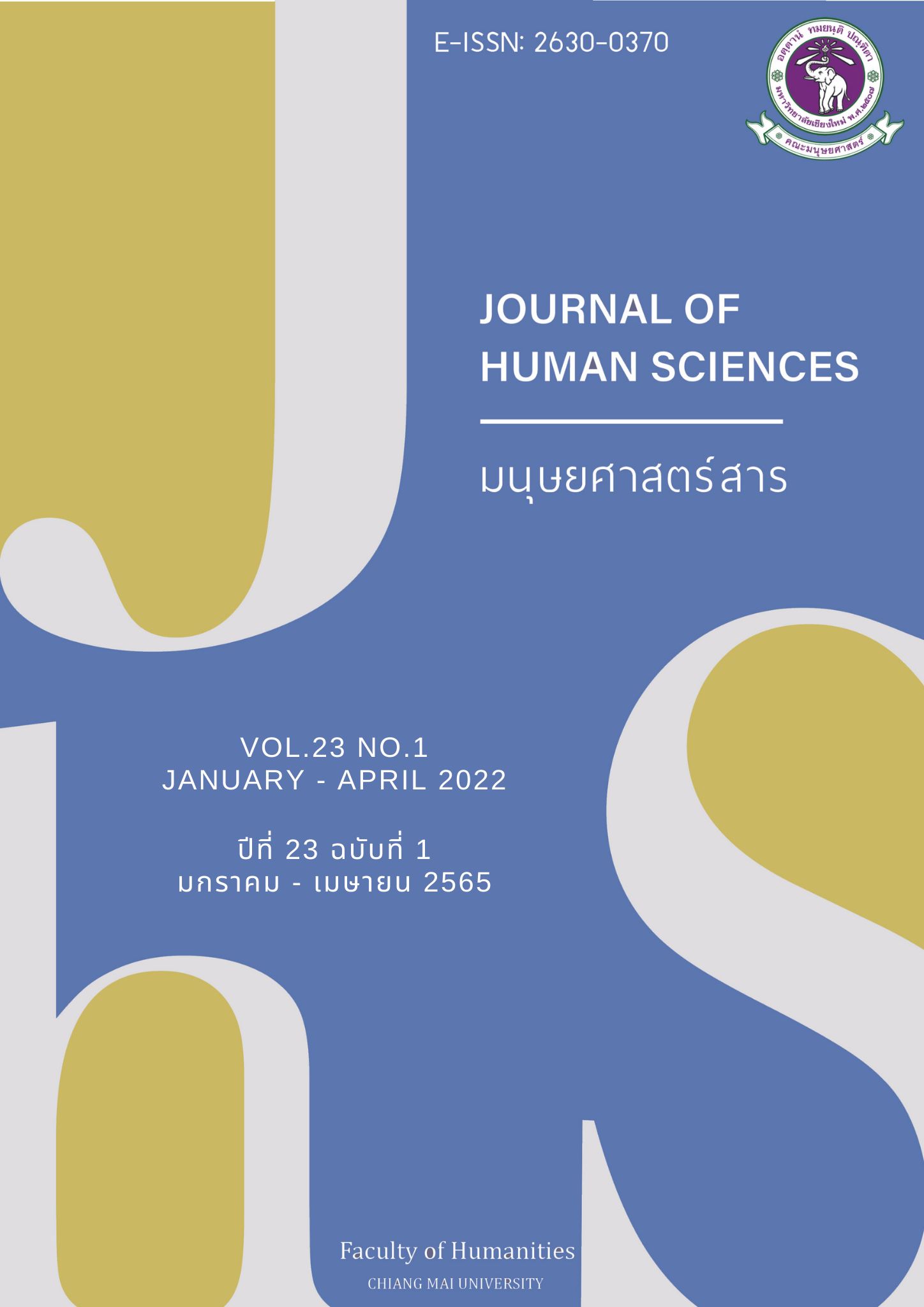กลวิธีการหลีกเลี่ยงการตอบคำถามของดาราเพื่อนำเสนอภาพลักษณ์: กรณียุติความสัมพันธ์กับคู่รัก
Main Article Content
บทคัดย่อ
บทความวิจัยนี้มีวัตถุประสงค์เพื่อศึกษากลวิธีการหลีกเลี่ยงการตอบคำถามของดารา ศึกษาความสัมพันธ์ระหว่างกลวิธีการหลีกเลี่ยงการตอบคำถามกับการนำเสนอภาพลักษณ์ของดารา และศึกษาความสัมพันธ์ระหว่างภาพลักษณ์ที่ดารานำเสนอกับค่านิยมในสังคมไทยในกรณีที่ดารายุติความสัมพันธ์กับคู่รักผ่านสื่อประเภทอินเทอร์เน็ต โดยศึกษาจากคลิปวิดีโอของดาราที่ตอบคำถามเกี่ยวกับการยุติความสัมพันธ์ระหว่างตนเองและคนรักในปีพ.ศ. 2560 และ 2561 ซึ่งปรากฏในฐานข้อมูลของเว็บไซต์ www.youtube.com จำนวน 11 คลิปวิดีโอ จำนวนทั้งสิ้น 2 ชั่วโมง และปรากฏผลัดการสนทนาทั้งสิ้น 289 ผลัดการสนทนา และวิเคราะห์ข้อมูลโดยประยุกต์ใช้ทฤษฎีหลักการความร่วมมือในการสนทนา (Cooperative Principle) ของพอล เอช. ไกรซ์ (Paul H. Grice) แนวคิดเกี่ยวกับภาพลักษณ์ และแนวคิดเกี่ยวกับค่านิยมในสังคมไทย
ผลการศึกษาพบว่า ดาราใช้กลวิธีการหลีกเลี่ยงการตอบคำถามในกรณียุติความสัมพันธ์ โดยใช้การไม่ปฏิบัติตามหลักการความร่วมมือในการสนทนา คือ การละเมิดหลักการ (Violating a maxim) การละเมิดหลักแบบมีนัย (Flouting a maxim) และการเลือกไม่ปฏิบัติตามหลักการสนทนา (Opting out a maxim) นอกจากดาราใช้กลวิธีดังกล่าวหลีกเลี่ยงการตอบคำถามแล้ว กลวิธีดังกล่าวยังเอื้อต่อการนำเสนอภาพลักษณ์ให้กับดาราอีกด้วย ซึ่งดาราได้นำเสนอภาพลักษณ์เหล่านั้นสอดคล้องกับค่านิยมของสังคมไทยที่เป็นเสมือนกฎในสังคมที่ใช้ควบคุมสมาชิกในสังคม ดังนั้น เมื่อภาพลักษณ์ของดาราสอดคล้องกับค่านิยมของสังคมไทย อาจทำให้ดารามีคุณสมบัติที่น่าชื่นชม และได้รับการยอมรับหรือสนับสนุนจากคนในสังคม ซึ่งทำให้ดารามีความเจริญก้าวหน้าและมั่นคงในอาชีพต่อไปในอนาคต
Article Details

อนุญาตภายใต้เงื่อนไข Creative Commons Attribution-NonCommercial-NoDerivatives 4.0 International License.
เอกสารอ้างอิง
language skill for communication]. Bangkok: Sripratum university.
Awakun, W. (2002). phatthana bukkhalikkaphap: theknik lae withikan [Personality development:
techniques and methods]. Bangkok: Chulalongkorn university.
Chinwikai, W. (2003). khwammai priap “na” priapthiap phasa thai kap phasa yi pun [A
Comparative Study of Face-Related Figurative Language in Thai and Japanese]. Master’s
thesis, Thammasat University.
Grice, Paul H. (1975). Logic and conversation. In Peter Cole and Jerry Morgan (Eds.) Studies in
Syntax and semantics III (pp. 41 – 58). New York: Academic Press.
Hongladarom, K. & Choksuwanit, Th. (2008). watjana patibat sat [Pragmatics]. Bankgkok:
Chulalongkorn university.
Jaichansukkit, Ph. (2005). phalang haeng phaplak [Image is power]. Bangkok: Than media
network.
Nantachantoon, S. (1997). radap phasa khong phasa phut lae phasa khian [Level of Spoken
and Written language]. 361661 Spoken and Written language. Bangkok: Kasetsart
University.
Phaithayawat, S. (1995). phuenthan watthanatham thai: naeothang kan anurak lae kan
phatthana [Thai culture: Guidelines for Conservation and Development]. Bangkok:
Rajabhat Institute Council.
Phajit, B. (2006). prapheni watthanatham thai lae khati khwamchuea [Thai culture, traditions and
beliefs]. Bangkok: Odeon store.
Rong, Chen. (2001). “Self politeness: A proposal.” Journal of Pragmatics, 33(1): 87 – 106.
Vivattananukun, M. (2002). lakkan samphat nai wongkan borihan kan suesanmuanchon lae kan
wichai [Interviewing principles in management, mass communication and research].
Bankgkok: Chulalongkorn university.
Wannaprasert, Ch. (1979). sangkhom thai [Thai Society]. Bangkok: Prae Pittaya.
Wongmontha, S. (1998). Kan Prachasamphan: Thruesadi Lae Patibat [Public relations: theory and practice]. Bangkok: Thira Film.


